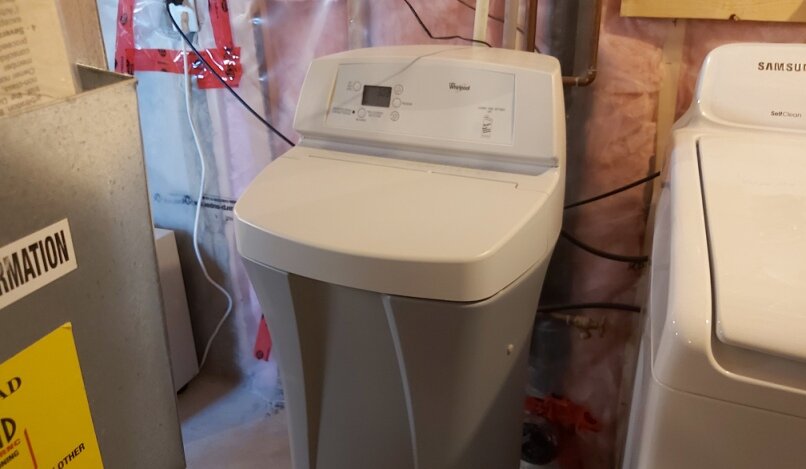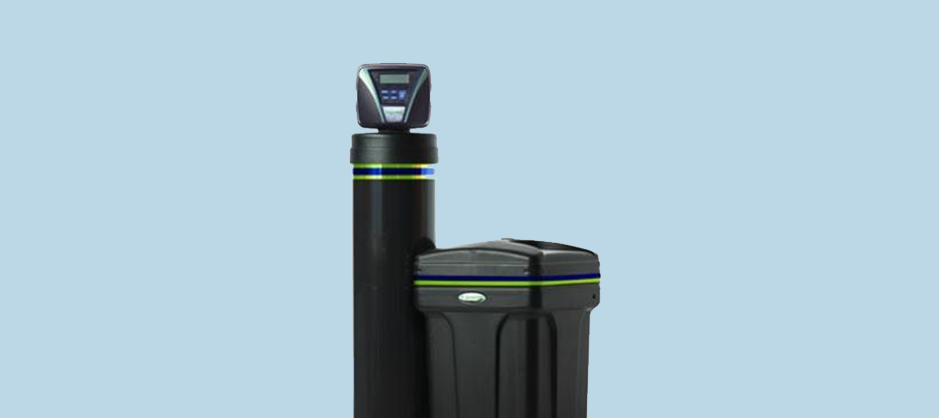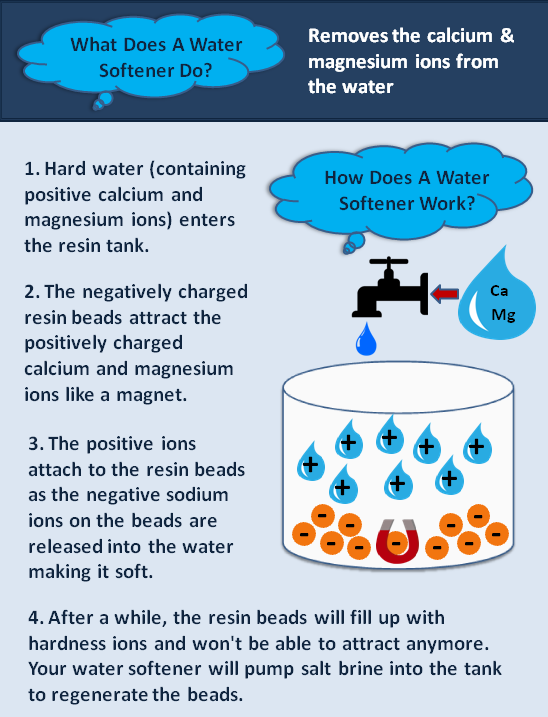Water softener full of water: If your water softener is full of water and you need to drain it, there are several methods that you can use.
Click each heading for detailed instructions:
1. Use a bucket or scoop
2. Use a wet-dry vacuum
3. Remove the brine well and dump the water
4. Do a manual regeneration cycle
There are a number of reasons why your water softener might be full of water. Click here to learn about these reasons.
Click here to learn about preventative measures you can take to stop this problem from happening again.
Read on for help fixing a water softener full of water.
Is Your Water Softener Full of Water? - Here's How to Drain It
There are a few different methods that you can use to drain your water softener's brine tank. These include:
1. Use a Bucket or scoop:
You can simply scoop out all of the water in your water softener by hand with a bucket.
Get a clean bucket or scoop: Find a bucket that is small enough to fit inside your brine tank or use a large scoop or bowl.
Scoop out the water: Scoop out all of the water by hand and dump it into a larger container to dispose of down the drain.
Save water to use again: If the water inside is still relatively clean, you can scoop it into a larger clean container or your laundry tub so that you can use it again once you have fixed the problem.
Water softener full of water? Scoop it out by hand.
2. Use a Wet-Dry Vacuum:
If you don't like the idea of scooping out all of that water by hand, a wet-dry vacuum, also known as a shop-vac, can easily and conveniently suck out the water inside your water softener brine tank.
Wet-dry shop vacs are specially designed to suck up water as well as dry items. Not all shop vacs are designed to suck up water, so make sure that you use one that works for both wet and dry applications!
You can use a wet-dry vacuum to suck up the excess water from your tank | Source: Amazon
Steps to follow for using a wet-dry vacuum
A) Empty your collection tank: If your wet-dry vacuum uses the same collection tank for all materials (some models have a wet tank that’s separate from a dry dust bag), make sure that you empty the tank before you begin.
B) Remove the filter: Unless you are only sucking up a small amount of water, you should remove the filter before you begin.
C) Attach the right accessory to the hose: Your wet-dry vacuum will most likely have a special attachment used for sucking up water. It will probably look similar to a squeegee. Connect this to your hose.
D) Turn on your vacuum: Plug in your vacuum and turn it on. Place your hose and attachment into your brine tank to begin removing the water.
E) Empty the container: Once you have sucked up all the water, you can empty the vacuum. If the water is still clean, you might want to dump it into another container or laundry tub for use later.
The following video explains how to use a wet-dry vacuum:
Brine tank full of water? Use a wet-dry vacuum.
3. Remove the Brine Well and Dump the Water:
You can also disconnect your brine well and then dump the water down a drain as it doesn’t pose an environmental hazard.
To do this, you will need to remove the brine well. This is the long cylinder that holds the safety float inside your brine tank. Here are the steps to follow:
Remove the float: Before you remove the brine well, you need to take out the float which is located inside the brine tank. (If your softener has an overflow elbow, you will need to remove that too).
Pull out the cylinder: Next, carefully pull out the cylinder that contains the safety float.
Disconnect the fill tube: If you have a side-by-side water softener model, then you will also need to disconnect the fill tube that connects the brine tank to the head valve and the brine tank's overflow hose.
Dump the water: Lift up the brine tank and dump the water down a drain.
Remove the cylinder and safety float from your brine tank before you dump the water out.
4. Do a Manual Regeneration Cycle:
If your water softener allows for a manual regeneration you can do the following:
Push the regenerate button: You can activate a manual regeneration cycle by pushing and holding the "regenerate" button to empty a water softener full of water. During regeneration, your water softener automatically sucks all of the water out of the brine tank, so activating this cycle can remove the water for you.
Push the button a second time: When the regeneration cycle starts, make sure you push the button a second time to skip the brine cycle.
Push the button once the tank is empty: When your tank is empty, you can then push the button to skip all of the other cycles and return your water softener back to normal.
This method will only work if your regeneration is functioning properly on your water softener. If it isn't, then you will need to use one of the first three methods to drain the water from your unit.
Some water softeners have a Manual Regeneration function.
Troubleshooting for Specific Water Softener Brands
Here are some posts that will help you diagnose why your specific brand of water softener is not regenerating as well as other troubleshooting advice:
What Could Happen if Your Water Softener Doesn’t Drain Properly
A water softener full of water won't be able to function properly.
If your softener isn't fully draining during the regeneration cycle then your brine tank will eventually fill up with water until the safety float is engaged.
The saltwater solution in your brine tank will become too diluted, and your softener will not be able to regenerate properly. As a result, your water will remain hard.
If the salt brine in your water softener becomes too diluted, it can’t work properly.
Common reasons for a Water Softener Full of Water
There are a number of reasons that could leave you with a water softener full of water. These include:
1. Your water softener brine drain is kinked, plugged, or leaky: You may need to replace your drain line. You can contact a professional to do this for you.
2. Your brine line isn't properly attached to your brine tank and into the float: If your brine line isn't properly attached to your float, the water will flow directly into your tank and the float won't shut it off.
3. Your drain line flow control is clogged: If this happens, then it can't regulate the amount of water flowing through your system. You will need to clean any clogs.
Your drain line regulates the flow of water into your system. | Source: Waster Estore
4. Your brine line flow control is clogged: If this gets clogged, it will not be able to draw brine out of your tank.
5. You may have a salt clog at the bottom of your brine tank: A salt clog can stop the flow of water out of your tank.
6. Your safety float may be sticking: If it is sticking, it will need to be cleaned so it can once again shut off the flow of water into your tank.
7. Your injector is clogged: If this happens, then your injector won't be able to produce the suction necessary to suck water out of your tank.
For a full explanation of how to solve each of these causes of a water softener full of water, read our post, "Water Softener Full of Water - Complete Step By Step Guide Of What To Do."
Regular cleaning can help prevent a water softener full of water.
Preventative Measures to Avoid a Water Softener Full of Water
If you are not sure how much water should be in a brine tank after regeneration, click here.
Regular cleaning of the above components will help you avoid a water softener full of water. The video above shows you how to do it.
If you prefer to have a professional maintain your unit for you, WaterSmart offers the following preventative maintenance services at very reasonable rates:
Water Softener Diagnostic Check (Valve, Seals, Updating, Settings, Wireless Remote Sync, Test)
Water Softener Clean Out (Clean Venturi, Clean Salt Tank, Salt Bridge Removal, Sanitize)
Ultra Violet Light Replacement
Big Blue Filter Replacement
Resin Bed Clean-Out (Clean Resin Bed of Built-Up Contaminants And Iron / Magnesium).
Regular Tune-Ups and Replacement of Parts: Resin does not normally get cleaned out. The resin will usually be changed for new resin).
WaterSmart can repair your water softener for you at a reasonable rate
Still Need Assistance? Contact WaterSmart
If you have tried the above steps and your water softener is still not functioning properly, or if you don't want to attempt the above steps, contact a professional to help you.
If you live in the Kitchener-Waterloo region you can contact WaterSmart. We'd be happy to help you and we won't charge you an exorbitant rate. Our expert, experienced plumbers will come to your home, take a look at your system and advise you about the best course of action.
Whenever possible we will fix your existing unit, and if you need a replacement, we can advise you on what type of softener would best meet your needs. We even offer financing.
If you need a new water softener, WaterSmart offers financing
What our customers are saying…
“I purchased a water softener through Watersmart and I was very pleased with the whole process. I did not know much about water softeners but the salesman helped inform me how they work and which unit would work best for me. The install went great without any surprises and the unit works great. Would recommend to anyone.”











